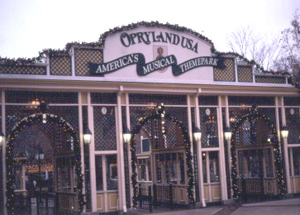
Opry House and Opryland Hotel
This Nashville entertainment and convention complex began in the early 1970s, when the National Life and Accident Insurance Company, the parent company of the nationally famous country music radio show the Grand Ole Opry decided to move the Opry from the crowded conditions of the Ryman Auditorium in downtown Nashville to a new suburban location between Briley Parkway and the Cumberland River. President Richard M. Nixon dedicated the new Opry House at its opening on March 16, 1974. The Los Angeles architectural firm of Welton Beckett and Associates, with George Hammons as principal architect, received the commission to design a modern home for the Grand Ole Opry. Hammons designed a technologically modern forty-eight-thousand-square-foot auditorium, yet his design reflected a rural sensibility due to its shingle-like sloping roof and the red brick that wraps around the building. Inside, the Opry House contains lofty, inspirational spaces, in keeping with its role as the secular “mother church” of country music.
The Opryland theme park opened in 1972. Like other theme amusement parks of the era, its architecture reflected different historical eras and regions, from the Old West to railroad towns to county fairs to the drive-in aesthetic of the 1950s. At the end of its 1997 season, owner Gaylord Enterprises closed Opryland and announced that a new mega-shopping mall, Opry Mills, would replace the amusement park. Opry Mills opened in 2000 and became a new tourist attraction in the city.
The Opryland Hotel complex (1977, 1983, 1987, 1996) is a fantasyland of a different sort and scale, designed in four stages by the Nashville architectural firm of Earl Swensson Associates. The exterior central block of this neo-Georgian Revival design recalls the Governor’s Palace at Colonial Williamsburg. But the interior–named the Magnolia Lobby–has more in common with grand southern plantation architecture. The Opryland Hotel has evolved into one of the largest convention hotels in the country; as of 1997, it was the considered the largest in the United States outside of Las Vegas, Nevada. The first major addition was the Conservatory (1983), which contains two acres of gardens underneath a huge glass and steel skylight. Four years later came the Cascades wing, with its huge fountains and man-made waterfalls, again under a giant skylight. The most recent addition is the Delta wing (1996), which reflects the architectural styles of the French Quarter of New Orleans and Louisiana’s Mississippi River plantations.



